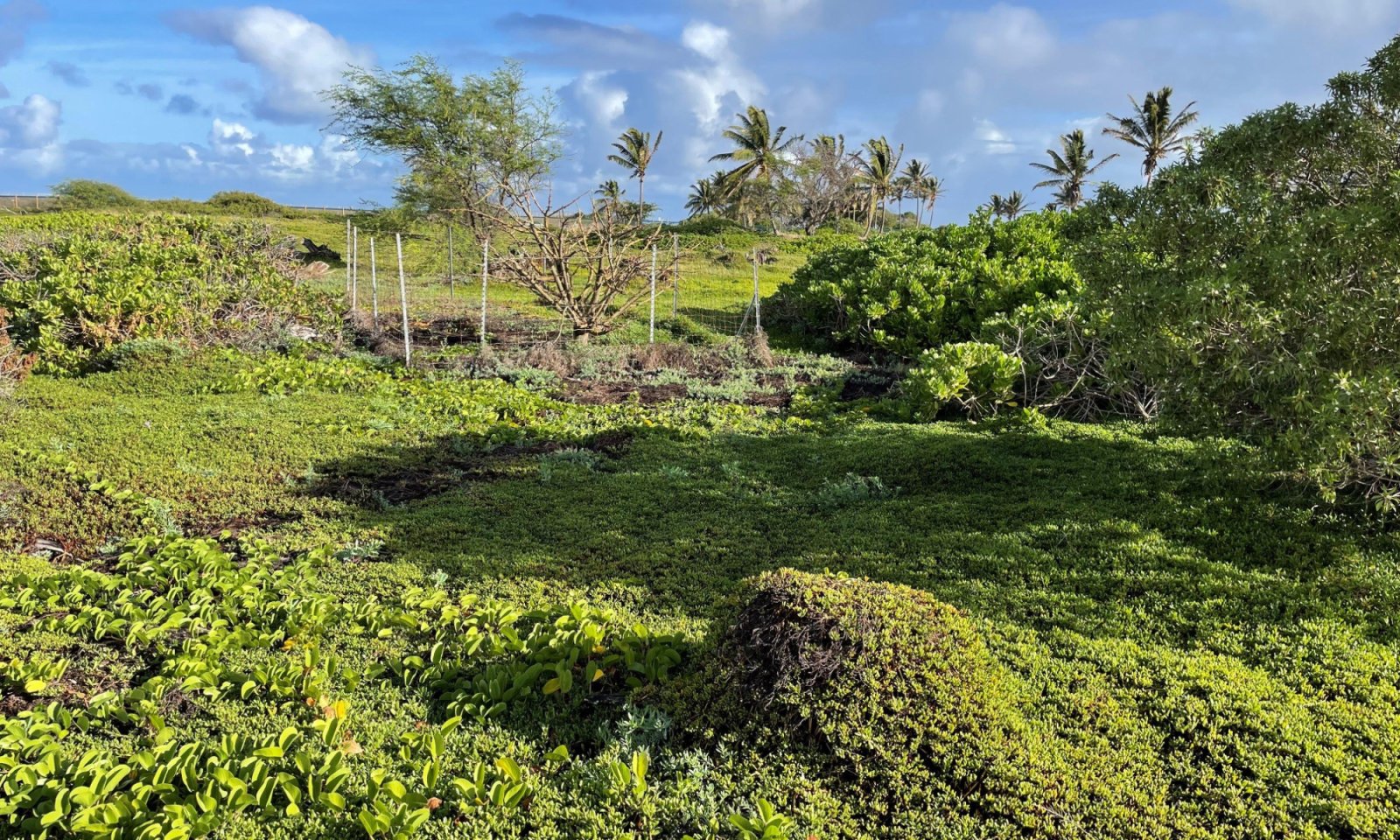
Sandy Shrubland
Scenario model
Current ecosystem state
Select a state
Management practices/drivers
Select a transition or restoration pathway
-
Transition T1A
Reference State (1) transitions to the Weed Invaded State (2) by reduction or loss of native species due to grazing and browsing by introduced or domestic ungulates and by gradual invasion by introduced plant species. It also occurs when agricultural land is abandoned.
More details -
Restoration pathway R2A
The Weed Invaded State (1) may be restored to the Reference State (2) by excluding all ungulates with a suitably designed fence. Although all introduced vegetation must eventually be removed, it is probably desirable to do so gradually to protect against wind erosion. Use of mulch is also recommended to hold the soil until native plants have been reestablished. Irrigation will probably be necessary in the early stages of native plant reestablishment, as the soils drain very rapidly and have low water holding capacity.
More details -
No transition or restoration pathway between the selected states has been described
Target ecosystem state
Select a state
Description
The Reference State (1) consists of one community phase. It is of marginal value as grazing land. The presence of introduced feral or domestic ungulates cause soil disturbance and loss of native species or reductions in their abundance that facilitate the transition to the Weed Invaded State (2).
Submodel
Description
The Weed Invaded State (2) consists of one community phase. It some value as grazing land due to presence of introduced forages, including kiawe (Prosopis pallida) for pods, buffelgrass (Pennisetum ciliare), and Australian saltbush (Atriplex semibaccata). Native plant species are rare or nonexistent. The vegetation structure has changed from the shrubland/grassland of the Reference State to savanna of introduced trees, shrubs, grasses, and forbs.
Submodel
Mechanism
Reference State (1) transitions to the Weed Invaded State (2) by reduction or loss of native species due to grazing and browsing by introduced or domestic ungulates and by gradual invasion by introduced plant species. It also occurs when agricultural land is abandoned.
Mechanism
The Weed Invaded State (1) may be restored to the Reference State (2) by excluding all ungulates with a suitably designed fence. Although all introduced vegetation must eventually be removed, it is probably desirable to do so gradually to protect against wind erosion. Use of mulch is also recommended to hold the soil until native plants have been reestablished. Irrigation will probably be necessary in the early stages of native plant reestablishment, as the soils drain very rapidly and have low water holding capacity.
Model keys
Briefcase
Add ecological sites and Major Land Resource Areas to your briefcase by clicking on the briefcase (![]() ) icon wherever it occurs. Drag and drop items to reorder. Cookies are used to store briefcase items between browsing sessions. Because of this, the number of items that can be added to your briefcase is limited, and briefcase items added on one device and browser cannot be accessed from another device or browser. Users who do not wish to place cookies on their devices should not use the briefcase tool. Briefcase cookies serve no other purpose than described here and are deleted whenever browsing history is cleared.
) icon wherever it occurs. Drag and drop items to reorder. Cookies are used to store briefcase items between browsing sessions. Because of this, the number of items that can be added to your briefcase is limited, and briefcase items added on one device and browser cannot be accessed from another device or browser. Users who do not wish to place cookies on their devices should not use the briefcase tool. Briefcase cookies serve no other purpose than described here and are deleted whenever browsing history is cleared.
Ecological sites
Major Land Resource Areas
The Ecosystem Dynamics Interpretive Tool is an information system framework developed by the USDA-ARS Jornada Experimental Range, USDA Natural Resources Conservation Service, and New Mexico State University.
